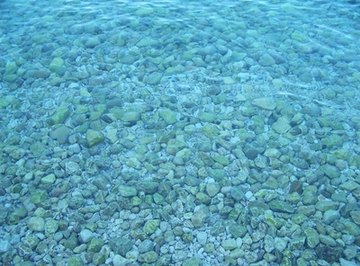
Reverse Osmosis
Reverse osmosis, or the RO process, removes about 95 to 99 percent of the dissolved salts and inorganic material found in seawater, resulting in a safe, purified, salt-free drinking water. It is the finest level of filtration available for the conversion of seawater to drinking water and creates clean healthy water with a pleasing taste. The process involves pushing seawater through a semi-permeable membrane that traps salt and other impurities and then through microscopic strainers to further the filtration process.
Pre-Treatment
In the reverse osmosis (RO) desalination process, seawater is pre-treated, which helps to preserve the filtration membranes as seawater is pushed through them under pressure to remove the salt. The pre-treatment process changes the consistency of the water before it continues on through micro-filters that provide even more protection to the reverse osmosis membranes. The water then filters through a microscopic strainer that further removes any impurities, bacteria, and dissolved salts in the water. Although the RO membranes are typically successful at removing up to 99 percent of the bacteria in the water as well as dissolved salts, the quality and general wear of the RO membranes greatly affects the level of inorganic compounds successfully removed from the water as well as the amount of feed-water that is wasted in the process.
Feed Water
About 50 percent of the feed-water that passes through the RO filtration system will be used as the finished product. The other 50 percent becomes a brine solution that contains the concentrated salts and impurities that were removed through the filtration process, which is discarded during the desalination process. The portion that will become drinking quality water will pass through a post-treatment process, during which the alkaline levels of the soft water are raised and balanced in order to protect the water's distribution system from corrosion. Chlorine may also be added for the purpose of cleaning and maintaining the water distribution and storage systems.
About the Author
Christi Jordan has been a freelance writer since 2001 and has previously written for AOL and Weblogs Inc. In addition to writing for Demand Studios, Jordan currently provides content for several promotional business blogs, herbal and alternative health guides, and is a certified Childhood Obesity Specialist, Core Training Specialist, Personal Trainer and Aerobics Instructor.
Photo Credits
sea water image by qadro from Fotolia.com
